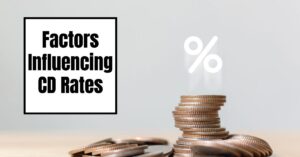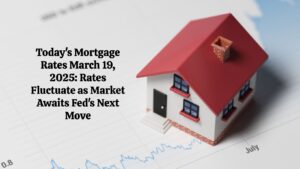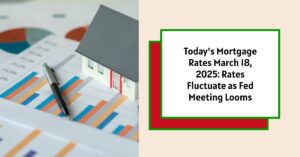Is the California housing market finally turning a corner? The answer appears to be yes, at least for now. The California housing market rebounds in February with the highest home sales in more than two years, signaling a potential shift after a period of slower activity.
According to the California Association of Realtors, existing, single-family home sales reached a seasonally adjusted annualized rate of 283,540 in February, an 11.6% increase from January and a 2.6% rise from February 2024. This news offers a glimmer of hope for buyers and sellers alike, but what exactly does this mean for you? Let's dive into the details and explore the factors driving this change, potential pitfalls, and what the future might hold.
California Housing Market Rebounds With Highest Sales in 2 Years
The Numbers Don't Lie: A February Surge
As a Californian resident and a keen observer of the housing market, I've been waiting for some positive momentum. The fact that February's sales pace surged 11.6% from January is definitely encouraging. It suggests that the combination of factors, like slightly lower mortgage rates, brought buyers back into the market. To put it in perspective, February's sales level was the highest since October 2022.
Here's a quick breakdown of the key figures:
- Existing Single-Family Home Sales (Seasonally Adjusted Annualized Rate): 283,540
- Month-over-Month Change: Up 11.6%
- Year-over-Year Change: Up 2.6%
- Statewide Median Home Price: \$829,060
- Year-over-Year Median Price Change: Up 2.8%
Why the Rebound? Decoding the Drivers
Several factors likely contributed to this February rebound:
- Declining Mortgage Rates: The slight dip in mortgage rates at the beginning of the year made homeownership more appealing to buyers who had been priced out of the market. Even a small reduction in interest rates can significantly impact monthly payments, making homes more affordable.
- Increased Inventory: More homes hitting the market meant buyers had more options to choose from, easing some of the competitive pressures that have been driving up prices. It is worth noting that total active listings grew at the fastest pace in two years.
- Pent-Up Demand: After a period of hesitation, some buyers who had been waiting on the sidelines may have decided that now was the time to jump in, contributing to the surge in sales.
- Seasonal Factors: February typically marks the beginning of the spring home buying season, which often sees a surge in activity compared to the slower winter months.
The Price Picture: A Mixed Bag
While sales are up, the price story is a bit more nuanced. The statewide median home price was $829,060 in February, a 1.2% decrease from January. However, it's important to note that this is still a 2.8% increase compared to February 2024.
Year-over-year, the median home price has increased for the 20th consecutive month, however the gain recorded was the smallest since July 2023. Also, the monthly drop in February was larger than the 10-year historical average drop of 0.7% recorded between the two months.
According to the California Association of Realtors, the downward trend in the statewide median price will likely reverse in the coming months, as home prices typically begin rising in March and continue climbing until the end of the homebuying season in August.
This suggests a market that is still appreciating overall, but with some potential for price adjustments in certain areas. Factors such as location, property type, and local market conditions play a significant role in determining individual home values.
Regional Differences: California is Not a Monolith
It's crucial to remember that the California housing market is not uniform. Different regions are experiencing different trends. According to C.A.R's report:
- The San Francisco Bay Area recorded the largest gain from last year at an increase of 3.5% in sales, followed by the Central Coast (1.6 percent).
- Sales of existing single-family homes declined from a year ago in the Far North region (-4.9 percent), Central Valley (-3.5 percent) and Southern California (-3.0 percent).
Also, at the regional level, all major regions in California, except for one, registered a year-over-year median price increase in February. The Central Coast region posted the largest price growth from a year ago with a jump of 9.4 percent, followed by Southern California (4.8 percent), the Central Valley (3.5 percent) and the Far North region (1.8 percent). The San Francisco Bay Area (-0.5 percent) was the only region to record an annual price decline in February.
The Tale of Two Counties:
Home prices increased on a year-over-year basis in three-fourths of the counties in California. Santa Barbara (55.2 percent) registered the biggest price growth of all counties last month. Trinity falling the most at 58.9 percent.
These differences highlight the importance of working with a local real estate expert who understands the specific dynamics of your target area.
Inventory Levels: A Breath of Fresh Air
One of the most positive developments is the increase in inventory. Total active listings in February grew at the fastest pace in two years, with the level of active listings last month at a 4-month-high and marked the 13th consecutive month of annual gains in housing supply. This is great news for buyers, as it means more choices and less competition.
- Unsold Inventory Index (UII): 4.0 months in February, down from 4.1 months in January and up from 2.9 months in February 2024.
- Median Number of Days to Sell: 26 days in February, up from 22 days in February 2024.
The increased inventory is giving buyers more leverage and reducing the pressure to make quick decisions. The median number of days it takes to sell a home is increasing, this suggests that buyers are taking their time and being more selective.
Potential Roadblocks: What Could Derail the Rebound?
While the February data is encouraging, it's important to remain cautious. Several factors could still impact the California housing market in the coming months:
- Mortgage Rate Volatility: Fluctuations in mortgage rates can quickly change the affordability landscape, potentially dampening buyer enthusiasm.
- Economic Uncertainty: Concerns about a potential recession or slowdown in the economy could weigh on consumer confidence and impact housing demand.
- Inflation: Persistently high inflation could erode purchasing power and make it more difficult for people to afford homes.
- Policy Changes: Government policies related to housing, zoning, or taxation could have a significant impact on the market.
The California Association of Realtors also stated that the ongoing policy and economic uncertainties have been weighing on consumer confidence and have created instability in the financial market in the past few weeks. With mortgage rates expected to remain volatile in the near term, pending sales could continue to fluctuate as the market enters the spring homebuying season.
Expert Opinions: What the Pros Are Saying
According to C.A.R. President Heather Ozur, “California home sales rebounded strongly in February after a sluggish start to the year, supported by increased buyer activity and more available homes on the market…Lower borrowing costs made homeownership more accessible to buyers who were previously sidelined by affordability challenges, while the rise in available inventory will help ease some of the competitive pressures that have defined the market in recent years and set a positive tone for the market for the rest of the year.”
C.A.R. Senior Vice President and Chief Economist Jordan Levine stated, “The moderation in mortgage rates that began at the start of the year, coupled with a noticeable increase in homes for sale last month, provided a much-needed boost to California’s housing market in February…Although sales are still below historical averages, this increase marks an encouraging shift in the market. Despite ongoing economic and policy uncertainties, mortgage rates are expected to stabilize later this year. As a result, the housing market is likely to see continued improvement through the second and third quarters of 2025.”
My Perspective: A Cautiously Optimistic Outlook
Based on the data and expert opinions, I believe the California housing market is showing signs of improvement. The increase in sales and inventory is a positive development, but it's crucial to remain realistic about potential challenges.
As someone who has followed the California housing market closely, I believe this rebound is more of a recalibration than a full-blown recovery. We're likely to see a more balanced market in the coming months, with less intense bidding wars and more opportunities for buyers to negotiate.
The advice is to not get carried away by the current surge. Stay informed about the latest market trends, work with a trusted real estate professional, and make decisions that are right for your individual circumstances.
Looking Ahead: What's Next for the California Housing Market?
Predicting the future is always challenging, but here are some potential scenarios for the California housing market in the coming months:
- Continued Moderate Growth: If mortgage rates remain relatively stable and the economy avoids a major downturn, we could see continued moderate growth in sales and prices.
- Market Stabilization: The market could stabilize, with sales and prices plateauing as buyers and sellers adjust to the new normal.
- Potential Correction: If economic conditions worsen or mortgage rates rise sharply, we could see a price correction in some areas.
Key Factors to Watch:
- Mortgage Rates: Keep an eye on the direction of mortgage rates, as they will continue to influence buyer affordability.
- Economic Data: Pay attention to economic indicators such as GDP growth, inflation, and unemployment rates.
- Inventory Levels: Monitor the supply of homes on the market, as it will impact the level of competition.
Final Thoughts
The California housing market's rebound in February is a welcome sign, but it's essential to approach the situation with a balanced perspective. While there are reasons to be optimistic, potential challenges remain. Whether you're a buyer or a seller, staying informed, working with experienced professionals, and making smart decisions based on your individual circumstances will be crucial for navigating the market successfully.
Work with Norada, Your Trusted Source for
Investment Properties in the U.S.
Discover high-quality, ready-to-rent properties designed to deliver consistent returns.
Contact us today to expand your real estate portfolio with confidence.
Contact our investment counselors (No Obligation):
(800) 611-3060
Related Articles:
- California Housing Market Predictions 2025
- High Mortgage Rates Slam California Housing Market in January 2025
- California Housing Market Roars Back: Biggest Sales Jump Since 2021
- The Great Recession and California's Housing Market Crash: A Retrospective
- California Housing Market Cools Down: Is it a Buyer's Market Yet?
- California Dominates Housing With 7 of Top 10 Priciest Markets
- Real Estate Forecast Next 5 Years California: Boom or Crash?
- Anaheim, California Joins Trillion-Dollar Club of Housing Markets
- California Housing Market: Nearly $174,000 Needed to Buy a Home
- Most Expensive Housing Markets in California
- Abandoned Houses for Free California: Can You Own Them?
- California Housing in High Demand: 19 Golden State Cities Sizzle
- Homes Under 50k in California: Where to Find Them?
- Will the California Housing Market Crash?
- California Housing Market Crash: Is a Correction Coming Up?










